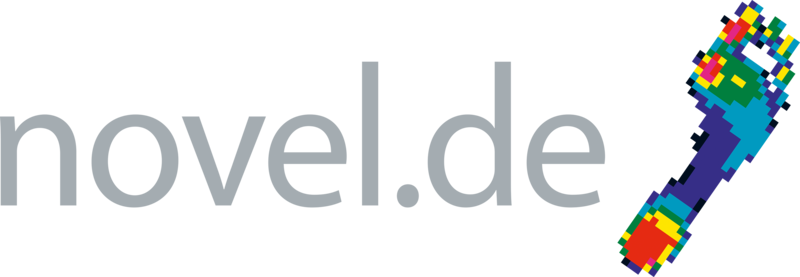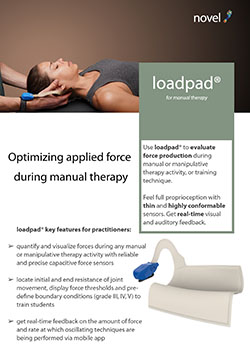Optimizing applied force during manual therapy
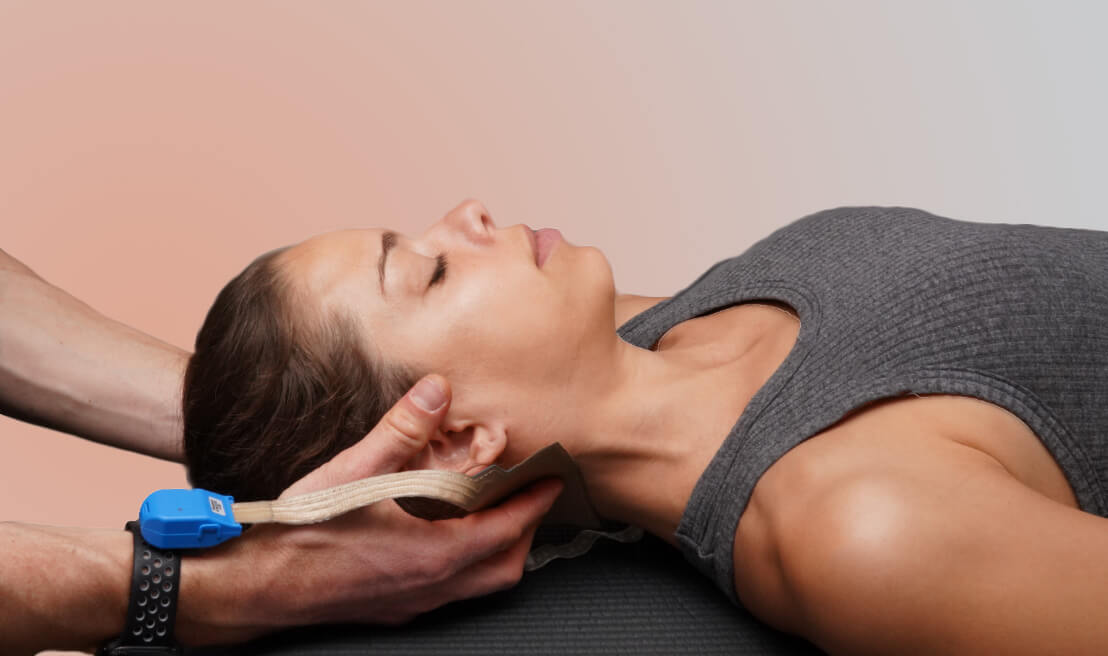
The loadpad® system for manual therapy enables practitioners to assess and map applied forces during any manual therapy or manipulative movement during training and during therapy.
What is the benefit to use loadpad® during manual therapy?
During manual therapy training applied forces are difficult to evaluate and reproduce. Locating the initial and end resistance or applying the appropriate loading rate during a thrust can be subjective and may require a lengthy learning process and years of experience. loadpad® supports the practitioner and helps train the student using real-time feedback enabling them to quickly learn how their proprioception is related to the forces being applied to the patient.
How exactly can loadpad® support manual therapy training?
The loadpad® sensor is a thin, elastic sensor measuring total force between the practitioner’s hand and the patient’s body. Unlike standard pressure sensors, which require an homogenous loaded surface to measure the pressure correctly, loadpad® enables accurate measuring of heterogenous forces loaded across the surface sensor, as one total force. Regardless of the force being applied on the sensor area with one finger or the entire hand, the total force, meant to be repeated, is always measured correctly.
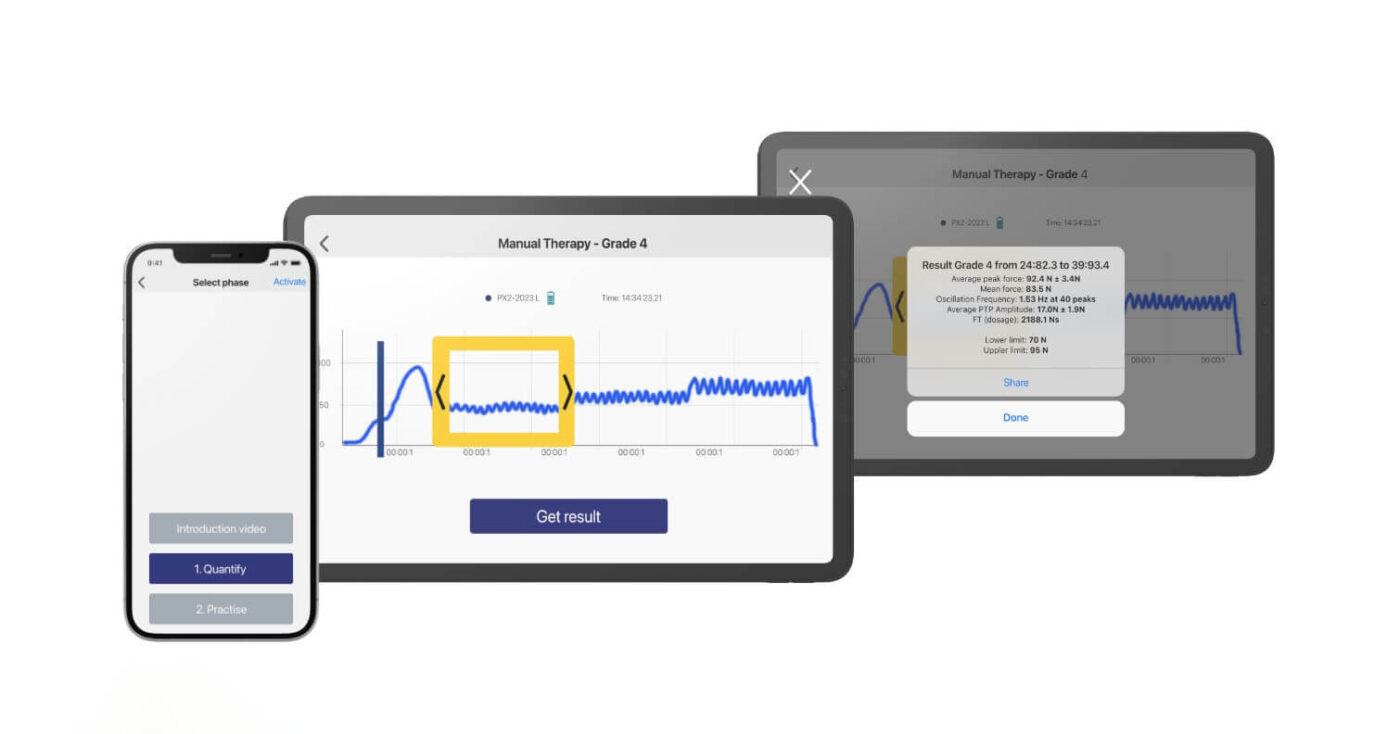
loadpad® allows the selection of additional parameters which may influence the success of a therapy, such as average peak force, mean force, oscillation frequency, peak-to-peak amplitude and force-time integral.
Furthermore, different grades of therapy can be defined and analyzed (grade III, IV, V (HVLA)).
Key features of the loadpad system for manual therapy:
The loadapp® and the loadpad® hardware are easy to use and self-instructional.
The loadpad® sensors are textile, soft, deformable, ultra-thin, and conformable to any surface. They may be used repeatedly and allow accurate measurement of total force. All sensors communicate via Bluetooth® with a mobile device. Data may be stored locally or uploaded to a cloud solution for further analysis.
loadpad® can be synchronized to other equipment via TTL using loadsync®. Real-time biofeedback can be supplied via visual or auditory cues.
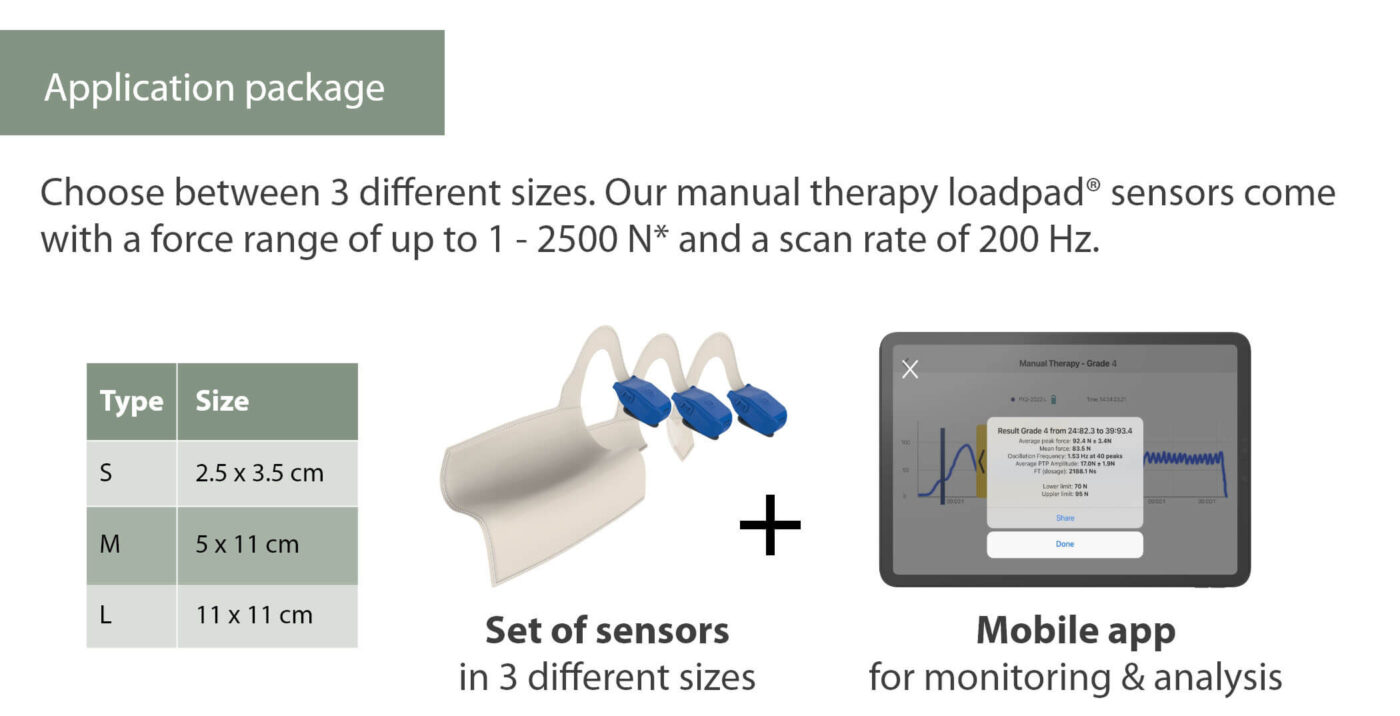
Flyer:
Click on picture and download PDF version.

